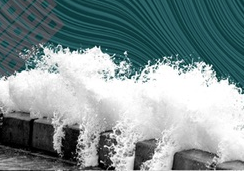
Although El Niño is on the way out after a record-breaking year of heat. Now brace yourself and prepare for the arrival of La Niña.
The origin of the name “El Niño” dates to the 1800s, when fishermen on the Pacific coast of South America would notice that a warm ocean current would appear every few years. Fish catches would drop drastically, negatively affecting the food supply and livelihood of the communities of coastal Peru. This warm water would arrive around Christmastime. Referring to the birth of Christ, they named the warm ocean waters, El Niño, which means “the boy” in Spanish. Fishing in this region is best during La Niña years when cold upwelling ocean water brings rich nutrientsoffsite link from the deep ocean, increasing the number of fish caught.
Now that we've told you about los Ninos. get far away from the coastline before the other family members move in.
As El Niño fades, hurricane-boosting La Niña looms large
A once boisterous El Niño in the tropical Pacific is weakening and may give way to ENSO-neutral conditions as early as next month, according to new NOAA data.
A La Niña event is likely to take shape later this summer. The rapid transition would give a significant boost to the Atlantic hurricane season by lowering the wind shear across the Atlantic which can tear such storms apart.
A La Niña occurring at the same time as record warm North Atlantic Ocean temperatures could make for one of the busiest Atlantic hurricane seasons on record, forecasters warn. https://www.axios.com/2024/05/09/el-nino-la-nina-hurricane-season
El Niño is on the way out after a record-breaking year of heat https://www.npr.org/2024/05/09/1250071141/el-nino-ending-la-nina-climat…
https://www.youtube.com/watch?v=ck0J7i3l4b4